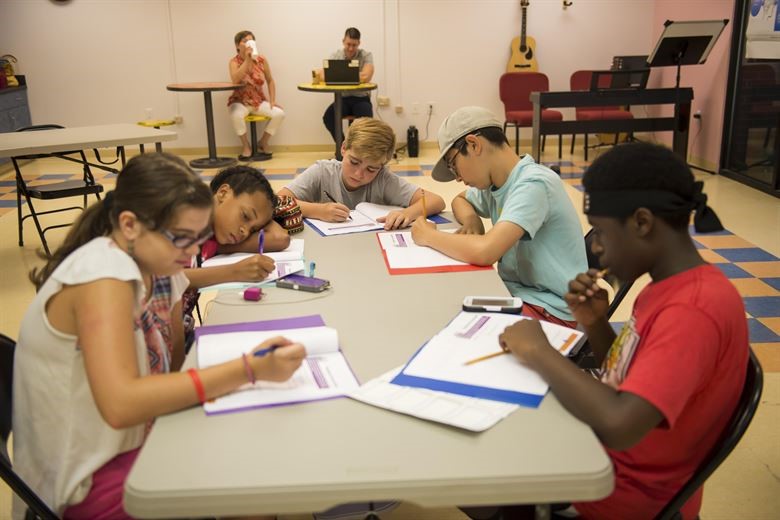
In 1969 (I know, that was years before most of you were born. It just shows my vast amount of experience), my New Year’s Resolutions included losing five pounds. In 1979, it was 10 lbs. 1989 – 15 lbs. 1999 – 20 lbs.
Do you see a pattern here? So what makes me think that I can write about helping our children set goals? Well, I’m good at reading and researching, plus I have all that vast experience of what doesn’t work to fall back on.
I read that the main reason we fail at meeting our goals is we don’t really want them. They are more likely something we think we ought to do (lose weight), are expected to do (keep the house clean), or one that will make someone else happy (my mom wanted me to have perfectly coifed hair when I was lucky to not have bed head). We don’t personally want to achieve these goals enough to pay the price.
It follows that our children aren’t going to succeed at goals that we set for them. You may want Johnny to read for half an hour a day. His own goal may be to not crack a book all year.

So how can we motivate Johnny, or Susie, or our own children? Why do we even care?
Goals give children long-term vision and short-term motivation. I have a grandson who was a poor student in Middle School. His parents spent hours every night forcing him to do his homework. It was agony for all. Then tragedy struck. His younger brother was found to have neuroblastoma, a cancer that proved to be fatal after a two-year battle. Between hospital stays, sanitizing the house, managing medications, his parents didn’t have time to do the homework battle every night. My grandson, however, found a long-term vision. He wanted to become a Navy Seal, like his dad had been. But he wanted to go in as an officer. Which meant that he needed to go to college. Which meant that he needed to raise his grades. Now he was motivated to do his own homework, because he had a goal. He went to study groups after school, turned in his papers on time, and significantly raised his grades, all on his own. Now a senior in high school, he plans to enter college in the fall.

Goal setting is a skill that will help your child in school, at home, with their friends, and all through life. It’s a skill that helps them succeed.
First, we need to model goal setting in our lives, and express them verbally. A goal formula is: I will + what + when. So if your sink is piled high with dishes (no surprise in my house), you can model the formula using goal language. “I will wash dishes and be done in 20 minutes.” Then when you are done, comment on it again, even if it’s “I didn’t quite get finished in 20 minutes, but they are done now. I’ll be faster tomorrow.” We can also involve children in day-to-day planning, from creating a shopping list to planning a family vacation. We can also share our own dreams and wishes with them. Studies find that kids are far more likely to adopt a new habit or skill if they see it in action instead of being lectured about it.
Kids are natural goal setters. Remember when your baby was learning to crawl and tried to reach a toy beyond his fingertips. She was determined to get it.

Think of a six-year-old plotting to get cookies from the top shelf. It took planning and a lot of work. They were both motivated. Children must see the goal as being of value to them.
An easy way to start children setting goals is Three Stars and a Wish.

First have them list three things that they have accomplished and are proud of doing. Then take time to discuss their dreams, wishes, or aspirations. What are they concerned about? Is there anything they are anxious about? What were the biggest challenges they faced last year? Listen to them and don’t be quick to offer solutions. Pose questions for them to consider instead of stating the answers.
Then help them develop their dreams and wishes into goals.
- Make sure they are realistic. If your allergic child wants a cat, if your son wants to play in the NBA and your family runs on the short side, or if your daughter wants to be the first astronaut to land on Saturn, you may need to have a reality check.
- Consider Pros and Cons. As they think about the positive and negative sides, they can decide if the goal is worth the effort.
- Have them be specific. Instead of “I want to do better in school,” try “I will raise my grade in English one step this semester.” Rather than “I want a new bike,” use “I will buy the new red mountain bike at The Spoke Shop.”
- Break it down into baby steps. Have them ask: What do I need to do? Who can help me? When can I do it? If there is a report due in 3 weeks and the goal is to get at least a B, the steps could be: Week one, review all the requirements, do the research. Week two, write the rough draft, make sure all the requirements are met. Week three, write the final draft, polish, get parents to review, type it into the proper form, submit on time.
The more children can think through their goal and identify what they need to do to achieve success, the greater the chance they will triumph.
- Write down the goal and the steps, maybe on a poster board. They can hang the chart in their room and check the steps off as they accomplish them. There is a reason that fundraisers use a thermometer to chart money donated. It helps to see where you are and what still needs to be done.

Younger children can use stickers or stars. Tweens and teens can take a photo of their goal using their cell phone and keep it as a screen saver to remind them of their intention.
It is important to encourage your child to establish his own checkpoint system—weekly, monthly—they decide. Do they want to mark it on a chart, review with you (or someone else), or log it into a Victory Log? For kids to learn to set and meet their own goals, they need to develop systems that actually work for them. Which means—DO NOT NAG. These are their goals, not yours. If you are in charge of making sure they reach their goals, they will not be self-motivated. You can encourage, celebrate steps accomplished, revisit how your child feels about reaching the goal, helping them remember why all their efforts are worth it and give them confidence in their abilities. Be proud of their efforts as well as their accomplishments.
- Celebrate goal success. You might photograph your child achieving his goal. There might be a special family dinner. Do make sure that the reward doesn’t become the goal. The promise of a new car for all A’s can lead to shortcuts, cheating, and other unacceptable behavior. The true goal of learning is subverted. Sometimes it need only be “I knew you could do it! Congratulations!”

By teaching our children these valuable skills we are giving them the tools they will need to succeed and have confidence in all areas and stages of their lives including school, sports, relationships, career and financially. And maybe if we use these skills, we can find success in our New Year’s Resolutions too. I might even lose some weight this year.
